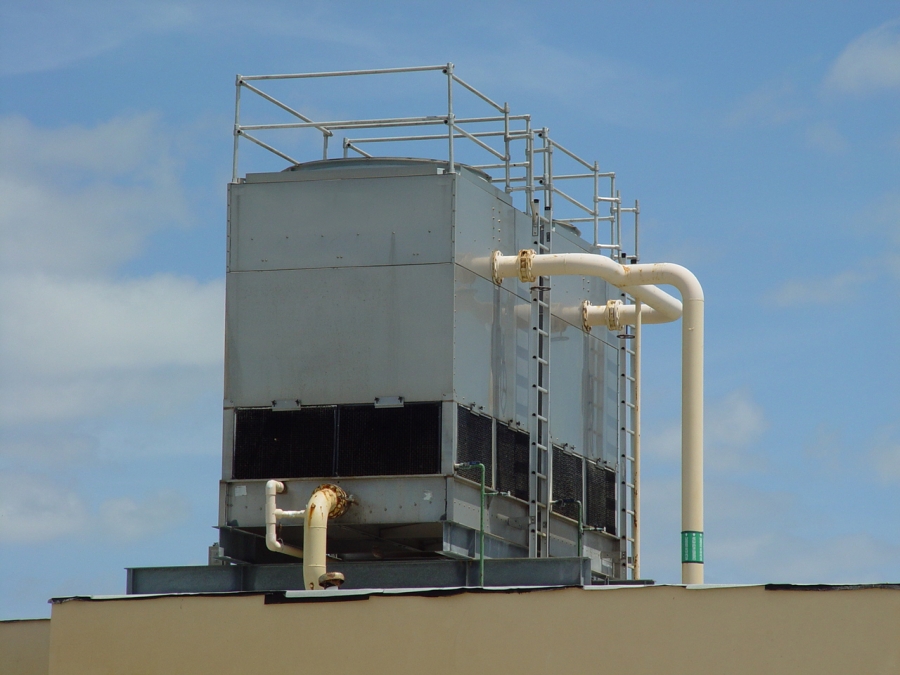Packaged Compressor and Condenser Units
An air cooled condensing unit is an enclosure for one or multiple condenser fans, compressors, coils, piping, and controls. Its purpose is to provide cooling to a building via a central station air handling unit. Condensing units are the outdoor section of a split system (A split system is simply an HVAC air conditioning system in which the air handler and condensing units are separate pieces of equipment) and cools the refrigerant which is circled through its cooling coil.

Topic Summary
Direct-Expansion (DX) Unitary Systems
In a direct-expansion (DX) unitary system, the evaporator is in direct contact with the air stream, so the cooling coil of the airside loop is also the evaporator of the refrigeration loop. The term “direct” indicates that the evaporator is in direct contact with respect to the airside loop while the term "expansion" refers to how the refrigerant enters the cooling coil. The liquid refrigerant passes through an expansion device (usually a valve) just before entering the cooling coil (the evaporator). This expansion device reduces the pressure and temperature of the refrigerant to the point where it is colder than the air passing through the coil.
The components of a DX unitary system refrigeration loop (evaporator, compressor, condenser, liquid and suction lines, expansion device, and unit controls) may be packaged together, which provides for factory assembly and testing of all components, including the electrical wiring, the refrigerant piping, and the controls. This is called a Packaged DX system. The capacity of these units ranges from around 10 through 135 tons.
Some typical applications include multistory office buildings, schools, municipal buildings, hotels, and industrial facilities. DX unitary system can be easily installed on the roof or ground for comfort cooling applications.
Condensing Unit Considerations
There are several considerations when installing an air cooled condensing unit, one of the most important being vibration. To guard against transmitting vibrations into the surrounding concrete and asphalt slabs precautions must be taken. Typically, a concrete housekeeping pad designed as an inertia base and not just to elevate the unit off the ground will suffice. Installation of the units themselves may involve bolting to the slab, fastening to rails, and installation of vibration isolation springs. Consult a design professional for more details.
In the past, Freon was the main refrigerant in use -- today its use has been banned. When dealing with existing equipment, a rule of thumb is that if the refrigerant that was originally specified for the unit is no longer available, then it may be time to replace the equipment. Substituting other refrigerants for the original can result in a loss in the equipment's capacity to cool. Also, the liquid and suction lines are a closed system. When dealing with replacement of the equipment, extra care must be taken to capture the refrigerant so that it does not leak out into the atmosphere. There are stiff penalties for failing to take the necessary precautions.
Maintenance should occur at regular intervals as indicated by the manufacturer’s written instructions.

Buildipedia Staff
The Buildipedia research and writing staff consists of dozens of experienced professionals from many sectors of the industry, including architects, designers, contractors, and engineers.
Website: buildipedia.com/


